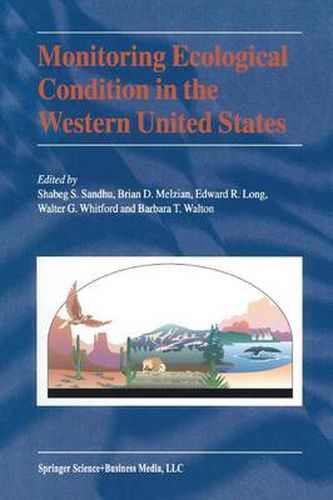Readings Newsletter
Become a Readings Member to make your shopping experience even easier.
Sign in or sign up for free!
You’re not far away from qualifying for FREE standard shipping within Australia
You’ve qualified for FREE standard shipping within Australia
The cart is loading…






This title is printed to order. This book may have been self-published. If so, we cannot guarantee the quality of the content. In the main most books will have gone through the editing process however some may not. We therefore suggest that you be aware of this before ordering this book. If in doubt check either the author or publisher’s details as we are unable to accept any returns unless they are faulty. Please contact us if you have any questions.
The monitoring of point sources by the Environmental Protection Agency (EPA), the states, and the tribes has documented and helped reduce the levels of chemical stressors affecting our ecosystems. With the controls on point sources reducing chemical contamination, new environmental challenges associated with nonpoint sources have emerged. To adequately deal with these new problems, EPA’s Office of Research and Development recognized the need to develop an overall under standing of the condition of our ecological resources, the trends in their condition, and the stressors affecting these systems on a broad scale. Toward this end, the En vironmental Monitoring and Assessment Program (EMAP) was established by EPA and has been strategically developing the scientific tools and techniques to monitor and assess the status and trends of aquatic ecosystems. EMAP scientists have developed new indicators and probability-based de signs to fill data gaps in the development of regional-scale assessments of our aquatic resources, as required in the Clean Water Act. We have a scientifically de fensible approach that allows: 100 percent coverage of the aquatic resources within broad geographic areas and the formulation of reference ‘conditions for es tablishing the health of these resources. The use of these indicators and designs were successfully demonstrated in the landscapes, streams, and estuaries of the mid-Atlantic states as part of the Mid-Atlantic Integrated Assessment (MAlA).
$9.00 standard shipping within Australia
FREE standard shipping within Australia for orders over $100.00
Express & International shipping calculated at checkout
This title is printed to order. This book may have been self-published. If so, we cannot guarantee the quality of the content. In the main most books will have gone through the editing process however some may not. We therefore suggest that you be aware of this before ordering this book. If in doubt check either the author or publisher’s details as we are unable to accept any returns unless they are faulty. Please contact us if you have any questions.
The monitoring of point sources by the Environmental Protection Agency (EPA), the states, and the tribes has documented and helped reduce the levels of chemical stressors affecting our ecosystems. With the controls on point sources reducing chemical contamination, new environmental challenges associated with nonpoint sources have emerged. To adequately deal with these new problems, EPA’s Office of Research and Development recognized the need to develop an overall under standing of the condition of our ecological resources, the trends in their condition, and the stressors affecting these systems on a broad scale. Toward this end, the En vironmental Monitoring and Assessment Program (EMAP) was established by EPA and has been strategically developing the scientific tools and techniques to monitor and assess the status and trends of aquatic ecosystems. EMAP scientists have developed new indicators and probability-based de signs to fill data gaps in the development of regional-scale assessments of our aquatic resources, as required in the Clean Water Act. We have a scientifically de fensible approach that allows: 100 percent coverage of the aquatic resources within broad geographic areas and the formulation of reference ‘conditions for es tablishing the health of these resources. The use of these indicators and designs were successfully demonstrated in the landscapes, streams, and estuaries of the mid-Atlantic states as part of the Mid-Atlantic Integrated Assessment (MAlA).